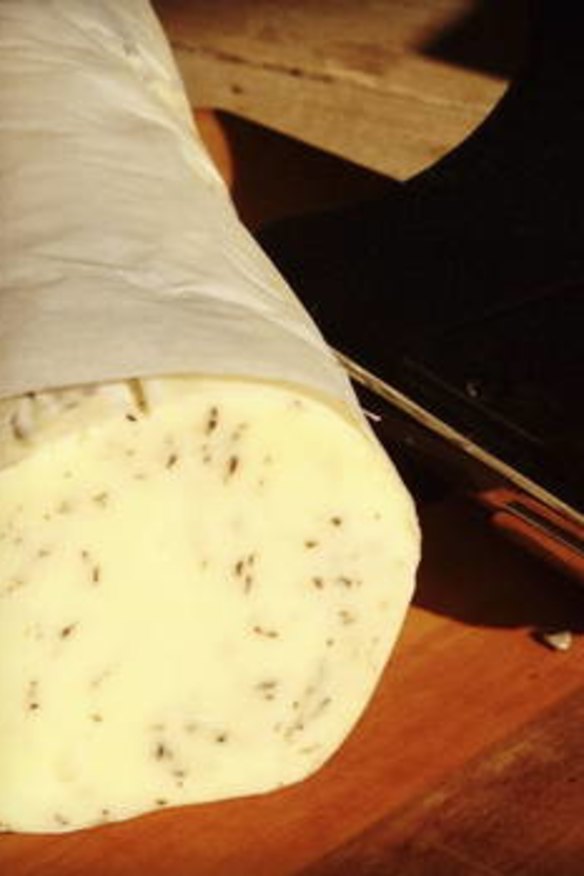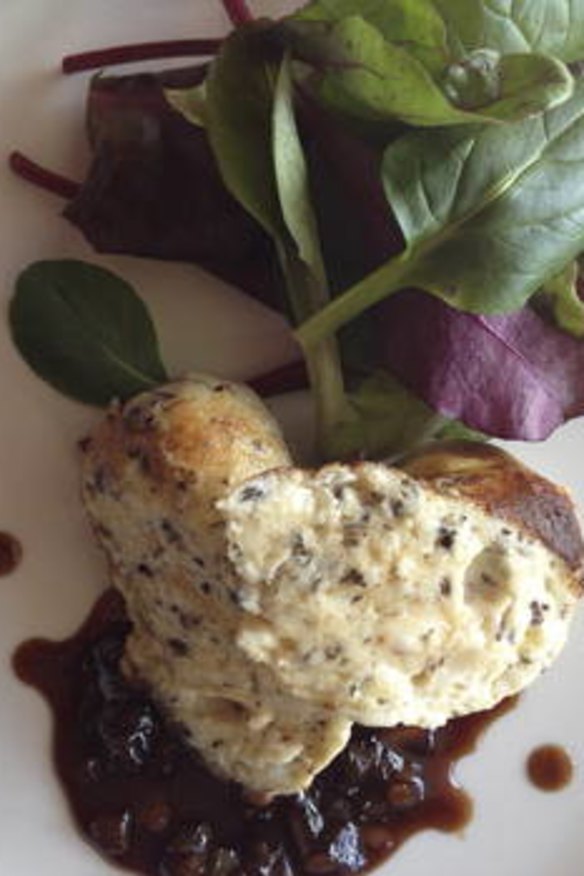In butter and booze

One of the many paradoxes in the truffle industry is the disconnect between how these highly praised and very seasonal gems are portrayed in glossy magazines and beautifully published cookbooks and served on the starched white tablecloths of the finest restaurants, and how you get them.
It's just a farmer with a dog, on a freezing wintery day, trudging around the trufferie, digging mud-covered lumps out of the ground, albeit with practised care. The dog waits patiently, tail wagging, for its, on the scale of things, meagre reward - a doggy nibble and pat on the head.
Each year, it fascinates me, as it no doubt does all the other lucky people who get to go on a truffle hunt. There's a lot of mystery, intrigue and even frustration associated with this industry and many farms are having huge problems finding anything, let alone the right type of truffle. But we seem to be tripping over them out here at Braidwood.

The early season truffles grow large and near the surface and sometimes break through - which is evidenced today by a neatly nibbled pair of truffles that have been attacked by a local rabbit with impeccable taste. I'm thinking, where is that rabbit? It should be quite tasty itself about now.
Each year I come out here to Peter and Kate Marshall's farm and learn so much, and not just about truffles. Like, I've never heard of an Adam Retort before today, but now I feel I need one.
The smell of a freshly picked truffle is hard to explain - that intense, earthy, spicy, floral, sometimes petroleum-like aromatic lift that speaks of the ground it is grown in is simply spellbinding.
This year, it's truffled vodka. Truffles have so many complex aromatics, hundreds of them, like my spice cupboard, some of which are expressed when immersed in fat, and others when they come into contact with food acids. But the most expressive way is when they are dissolved in alcohol. You can try this at home by macerating as much truffle as you can spare in a neutral spirit like vodka, leave it a few days and then smell and taste all the purified earthy aromatics. We had a shot before heading out for the hunt under the guise of enlivening our senses to the environment. It's true, I swear I could smell truffles on the cold late-morning breeze.
The best way to integrate the truffle into your winter's diet is to grate as much as you can spare into butter. The combination of milk fat and lactic acid seems to capture what we are after more than any other way besides alcohol. Probably the best butter to use is cultured butter in which the lactose is fermented to lactic acid before churning. It's not that hard to make this at home, it turns out.
If you have more time on your hands, boudin blanc - white pudding - is a terrific way of dressing up the truffle without overpowering that earthiness you crave.
This recipe is an adaption from Mark Best's Marque cookbook which recently joined my teetering pile of cookbooks. It's not one for novices, that's for sure, but among all the amazing things he presents at his restaurant, there are techniques and dishes that are achievable without access to a pacojet, Thermomix and combi-steamer.
Truffles are definitely a luxury item but you don't have to be a mining magnate to enjoy them, though it may prove helpful knowing one for other reasons, the way things are are going at the moment.
When you see the work that's gone into getting truffles to the table and the fact that they are around for such a fleeting period, it's worth planning and saving.
TRUFFLED BOUDIN BLANC
120g pork back fat, diced
120g chicken breast, diced
2 tsp salt
pinch white pepper
3 small eggs, cold
2 tbsp cornflour dissolved in 2 tbsp calvados or cognac
¼ cup fresh breadcrumbs, not toasted
30g butter, diced
250ml cream
40g black truffle, grated
hog casings
Start one day ahead. Divide the salt between two bowls - toss the pork fat in one and the chicken in the other. Cover and chill overnight, make sure all the other ingredients are chilled, too, plus the blender bowl and anything else you use. The key to not ending up with horrible gloop is keeping temperatures low throughout.
The next day, drain off any liquid and pat dry. Working fairly quickly and using a blender, blend the meat together to a fine puree with pepper. With the motor running, add the eggs one at a time, then add the calvados and cornflour mix, crumbs and butter. Slowly pour in the cream in a thin stream. The process of adding and mixing should only take a minute or two. Fold in the truffle and chill to fridge temperature.
Soak the casing in cold water, feed on to the sausage filler, tie a knot in the end and make a small pin hole in the end to let the air escape. Fill with the forcemeat - I used a sausage filler without the motor going, just pushed it through the filler by hand. This amount will make six little puddings. Once filled and sectioned, tie them with string and chill again.
To cook, bring a pot of water to 70C, gently add the puddings and poach at this temperature for one hour, being very diligent about maintaining the water temperature. Chill on ice to set and now they are ready to cook.
To serve, heat butter in a pan that will comfortably hold the sausages. Make a slit in the sausages and cook over a low heat cook until they are golden and warmed through, serve with blackcurrant sauce and a side salad with slices of caramelised apple tossed through it.
Blackcurrant shallot sauce
1 tsp butter
6 French shallots, diced
2 tbsp creme de cassis
½ cup muscat
1 cup rich brown veal stock
Gently fry shallot in butter until soft, add cassis and muscat, cook this down to slightly caramelise, add stock and reduce to a thick sauce.
CULTURED BUTTER
Bring two litres of pasteurised cream (note you can't use thickened or homogenised cream for this) slowly to 37C. Sprinkle over this an eighth of a teaspoon of mesophillic bacteria starter. Mix carefully with gentle agitation, pour into a sterilised container and ferment for 12-15 hours at room temperature.
Chill for up to a week (you get more character the longer) bring to room temperature again and place in a mixer bowl with a flat paddle and churn. You'll get whipped cream first, keep going and keep an eye on it. As the volume decreases, inexplicably you'll see it turn to a popcorn-like texture and release a lot of liquid. Stop! Phew, did you see that? It happens very quickly.
Drain the buttermilk through a colander, save and use for pancakes. Wash the butter to remove any milk solids, knead a little and wipe off any moisture, fold through grated truffle and salt, roll up and cover with clingfilm and let it set in the fridge. You'll get about 300g-400g of cultured butter.
Bryan Martin is a winemaker at Ravensworth and Clonakilla, www.bryanmartin.com.au